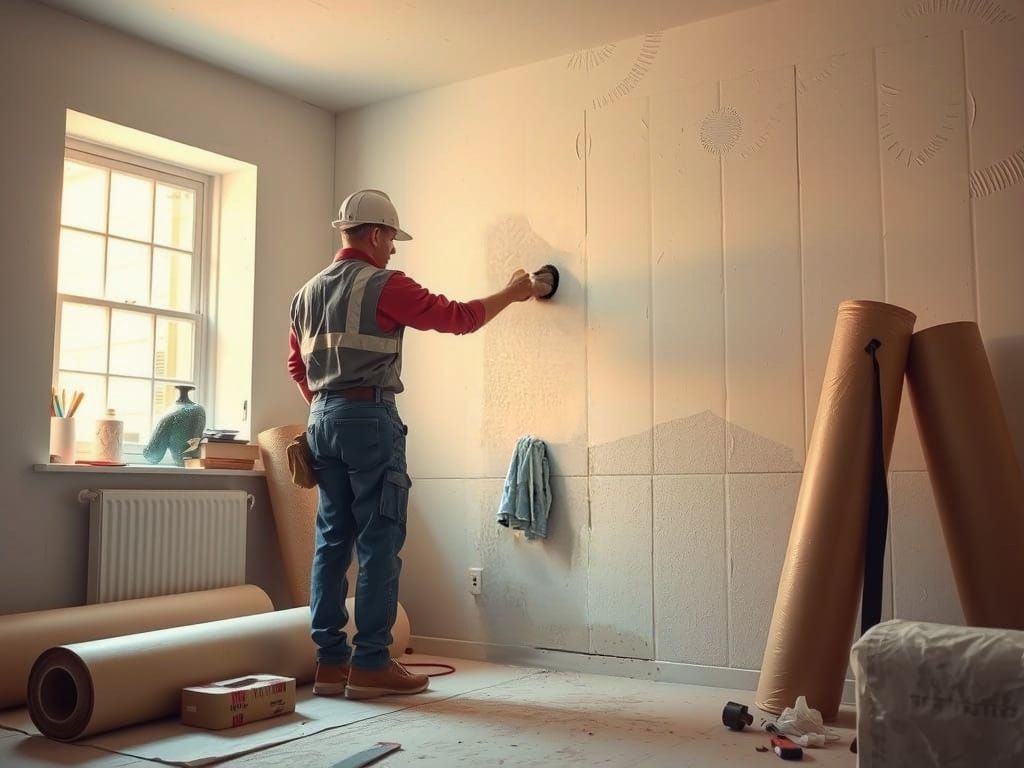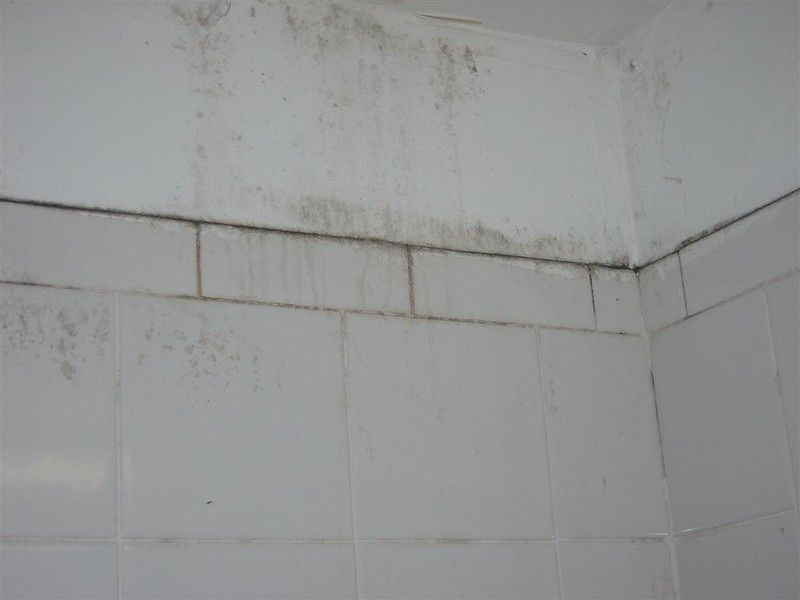Understanding Damp Proof Membrane: Essential Guide for Homeowners
WRITTEN BY THINKDRY DAMP PROOFING SPECIALIST
A damp proof membrane (DPM) is an essential component in maintaining the integrity of your home. It acts as a barrier against moisture, preventing water ingress and damp problems that could lead to significant structural damage and health issues. This guide aims to provide homeowners with a comprehensive understanding of damp proof membranes, including their function, installation process, and maintenance. Understanding these aspects will empower you to make informed decisions regarding damp proofing solutions for your property.
What is a Damp Proof Membrane and Why Do You Need It?
Understanding the Function of a Damp Proof Course (DPC)
A damp proof course (DPC) is a crucial element in the construction of a building that helps in preventing rising damp. It is typically installed at ground level, acting as a barrier between the brickwork and the damp soil beneath. The DPC works by utilising various materials, such as polyethylene or other waterproof membranes, to inhibit moisture from rising through capillary action. This barrier is essential in keeping the internal structure dry, protecting both the building materials and the occupants from the adverse effects of dampness.
How Do Damp Proof Membranes Prevent Dampness?
Damp proof membranes are designed to prevent dampness by providing a reliable barrier against moisture. They do this by blocking water vapor from penetrating through the walls and floors. When correctly installed, a damp proof membrane may be placed beneath concrete floors or within walls to ensure that the dry side of the membrane faces the interior of the property. This positioning stops moisture from reaching the plaster and other interior finishes, effectively preventing issues such as mould growth, damp patches, and deteriorating brickwork.
Common Types of Damp Proofing Solutions
There are various damp proofing solutions available, each tailored to specific situations. Physical damp proofing involves the installation of a physical barrier, such as a damp proof membrane or a damp proof course that physically blocks moisture. Liquid damp proofing, on the other hand, involves applying a liquid solution to surfaces that creates a waterproof barrier. Homeowners can choose from reliable damp proofing solutions based on the type of damp they are experiencing, whether it is rising damp, penetrating damp, or condensation-related issues.
What is the Installation Process for a Damp Proof Membrane?
Steps to Install a Damp Proof Membrane in Your Home
Installing a damp proof membrane requires careful planning and execution to ensure its effectiveness. The first step is to prepare the area by removing any existing flooring and ensuring the substrate is clean and dry. Next, the damp proof membrane should be laid out, with edges overlapping and ensuring continuous coverage along the brickwork. It is crucial to install the membrane at least 150 mm above ground level to effectively block rising damp. After laying the membrane, it should be secured in place, and any joints sealed properly to prevent water ingress.
How to Ensure the DPM is Properly Placed
Proper placement of the damp proof membrane is vital for its effectiveness. To ensure the DPM is correctly installed, it is important to check that it is continuous with the damp proof course and that there are no gaps or tears. The membrane should also be positioned to direct any moisture away from the walls, ideally with an air gap to allow for ventilation. Additionally, it is advisable to consult with a ThinkDry damp proofing professional who can assess the situation and provide guidance on the best practices for installation.
Common Mistakes to Avoid During Membrane Installation
When installing a damp proof membrane, several common mistakes can undermine its effectiveness. One of the most significant errors is failing to overlap the edges of the membrane, which can create pathways for moisture to enter. Additionally, neglecting to seal joints effectively or placing the membrane below ground level can result in water ingress. It is also essential not to install the membrane over damp concrete or soil, as this can lead to trapped moisture and subsequent damp problems. Being aware of these pitfalls can help ensure a successful membrane installation.
How to Identify Damp Problems in Your Home?
Signs of Rising Damp and Penetrating Damp
Identifying damp problems early can prevent extensive damage and costly repairs. Signs of rising damp typically include damp walls, peeling paint, and a musty smell near the base of the walls. Conversely, penetrating damp is often characterised by damp patches that appear on walls, especially after heavy rainfall. Homeowners should be vigilant and look for other indicators, such as mould growth or the presence of condensation, to determine if damp proofing measures are necessary.
How to Detect Damp Walls and Damp Patches
Detecting damp walls and damp patches can often be done through visual inspection. Homeowners should check for discolored areas on walls, soft plaster, or indications of mould. Using a moisture meter can also help measure the moisture levels in the walls, providing a more accurate assessment. If damp patches are persistent, it may indicate a more severe underlying issue, such as a failure in the damp proofing system or excessive water ingress.
Understanding the Impact of Condensation on Dampness
Condensation can significantly contribute to dampness within a home. It occurs when warm, moist air comes into contact with cooler surfaces, leading to water droplets forming. This can create ideal conditions for mould growth and deterioration of building materials. Homeowners should understand the relationship between condensation and other types of damp, such as penetrating damp, and address ventilation issues to minimise moisture buildup and protect their home from damp-related problems.
What Are the Different Types of Damp Proofing Methods?
Physical Damp Proofing vs. Liquid Damp Proofing
When considering damp proofing methods, it is essential to understand the difference between physical damp proofing and liquid damp proofing. Physical damp proofing involves installing a solid barrier, such as a damp proof membrane or a damp proof course, to prevent water ingress. In contrast, liquid damp proofing involves applying a liquid solution that penetrates the substrate and dries to form a waterproof barrier. Each method has its advantages, and the choice often depends on the specific damp problem being addressed.
How to Choose the Right Damp Proofing Method for Your Property
Selecting the right damp proofing method for your property requires careful consideration of various factors, including the type of damp present, the building materials used, and the specific conditions of your environment. Homeowners should assess whether the dampness is due to rising damp, penetrating damp, or condensation, as this will influence the most suitable treatment. Consulting with a ThinkDry damp proofing professional can help you make an informed decision, ensuring the chosen method effectively addresses the source of the damp problem.
Advantages of Using a Plastic Membrane for Damp Proofing
Plastic membranes are increasingly popular in damp proofing applications due to their numerous advantages. They are lightweight, easy to handle, and offer excellent resistance to water ingress. A plastic membrane can provide a continuous barrier against moisture when installed correctly, making it a reliable option for damp proofing solutions. Additionally, plastic membranes are often more cost-effective than traditional materials, allowing homeowners to achieve effective damp proofing without significant financial investment.
How Can You Maintain and Inspect Your Damp Proof Membrane?
Regular Maintenance Tips for Your Damp Proofing System
Maintaining your damp proofing system is essential for its long-term effectiveness. Regular inspections should be conducted to check for any signs of damage or wear on the damp proof membrane. Homeowners should ensure that any landscaping or external features do not obstruct the damp proof course and that water is directed away from the foundation. It is also important to keep gutters and downspouts clean to prevent water accumulation around the property.
How to Inspect for Damage or Wear Over Time
Inspecting for damage or wear on your damp proof membrane involves checking for any visible signs of deterioration, such as cracks, holes, or areas of lifting. Homeowners should also monitor for signs of damp problems, such as mould growth or damp patches, which may indicate a breach in the membrane. If you suspect any issues, it is advisable to contact a ThinkDry damp proofing professional who can perform a thorough inspection and recommend necessary repairs.
What to Do If You Discover a Problem with Your DPM
If you discover a problem with your damp proof membrane, addressing it promptly is crucial to prevent further damage. First, identify the source of the
damp problem and assess the extent of the damage. If the membrane is compromised, it may need to be repaired or replaced entirely.
Engaging a ThinkDry damp proofing professional can provide the expertise needed to ensure the issue is resolved effectively and that your home remains protected against
moisture ingress.
Need some advice?
Talk to one of our experts:
07972 822827
Quick Form
Fill in the form below and we will be in touch soon
Quick Form
We will get back to you as soon as possible.
Please try again later.
At thinkDRY we've made it our mission to help homeowners rid their property of damp. We are a rapidly expanding damp proof specialist and you can see the areas we serve here
Head Office: 07972 822827
Email: contact@thinkdry.co.uk
All Rights Reserved | ThinkDRY
Design and Developed by Leads Nurtured





